The Fulbright Scholar Program, STEM, and Scholars
Catherine Matto, STEM Discipline Lead, Fulbright U.S. Scholar Program
The Fulbright U.S. Scholar Program welcomes applications from professionals and academics in all disciplines to conduct research and/or teach at the university level in more than 125 countries.
Introduced after World War II, the Fulbright Program seeks to promote mutual understanding through person-to-person exchange––in the classroom, community, and beyond. These opportunities are listed in the program’s online catalog of awards, along with the application.
Using the catalog, applicants identify a country and award. They then develop a proposal that reflects their interests and expertise and contributes to their field. The annual competition opens in February, with an August 1 deadline (for grants that would take place during the 2018–2019 year).
Many awards do not require applicants to have a connection with an institution abroad, and assistance is available to create those connections. Grants range from two to 12 months and some allow the scholar to split the grant across multiple years (typically four to six months over two years). There are also awards for multi-country projects.
What does a strong application look like? Applicants are encouraged to match their expertise and interest with the award description, contact the program staff listed in the award description for guidance on selecting an award that is a good fit, and consult the application guidance—including review criteria and process—for more information. There are also sample project statement extracts on the website to help applicants consider how they might address certain aspects of the program, such as their research methodology, need to do the research in the proposed country, and expected effect.
Amstat News wanted to know more about applying for a Fulbright scholarship as a researcher so we interviewed past scholars and asked them why they applied and what they learned from the program.
Michael Schuckers
Where you spent your scholarship year: VTT Research Institute, Espoo, Finland
Period you were abroad: August 2013 to January 2014
Michael Schuckers is Rutherford Professor of Mathematics, professor of statistics, and director of the Peterson Quantitative Resource Center at St. Lawrence University. He holds a doctorate in statistics from Iowa State and is author of Computational Methods for Biometric Authentication.
Tell us about your time as a Fulbright Scholar, including a brief description of your project and what you accomplished.
I worked with the bioinformatics group at VTT on a variety of small statistical data analysis issues and a larger project on multivariate discrimination of longitudinal diabetes data. My boss at VTT, Marko Sysi-Aho, and I are working on a manuscript on that work. Finland has high rates of Type I diabetes, and so there is a good deal of diabetes work happening there.
What or who inspired you to apply for the scholarship?
The Fulbright program is a tremendous opportunity to be in another country, to create or strengthen research collaborations, and to have many of your expenses (e.g., housing) covered. For me and my family, the timing was right. My wife and I wanted to expose our children—who have grown up in a small rural town near the Canadian border—to other countries and other cultures. We had previously spent a semester during a previous sabbatical in Cagliari, Italy, and that experience was fantastic. Additionally, my father had applied to be a Fulbright Scholar in 1964, but the program (in Iran) was cancelled before he found out whether he was accepted.
Describe the biggest challenge and reward (or most memorable experience or impression) during your time as a scholar.
The biggest challenge was deciding on which country to apply. I did not have a great deal of professional connections with international colleagues outside of England, France, and Italy. Those are very popular destinations for Fulbright applicants. We spoke extensively with a program manager when she visited campus. The entire staff at the Council for International Exchange of Scholars (CIES) was incredibly helpful and insightful about how to apply and to what programs to apply. Perhaps the most rewarding aspects of our trip were the impacts that our time in Finland had on our children, who were 8,10, and 13 then. They gained appreciation for international travel, for Finnish culture, for living in an urban environment, and for being the outsider. For me, my time as a Fulbrighter provided an opportunity to develop another area of research with a diverse group of international colleagues.
How has the experience changed your research, teaching, and other professional or personal activities?
Professionally, I was able to use my time in Finland to establish a new area for my research: classification of longitudinal data. The techniques and approaches I learned over the course of my time at VTT, especially the more computational ones, have found their way into several of my courses. This experience had also led me to think more broadly about my role as mentor and coach to new generations of statisticians and researchers. On the personal side, we bought a small sauna this past year after having one in our apartment in Finland. There are 5 million people in Finland and about 2 million saunas.
What advice do you have for statisticians thinking about applying? (What was the biggest obstacle for you when applying for the Fulbright Scholarship?)
Our experience was tremendous, and I would certainly encourage any statistician who was interested to apply. I would say that starting early is important, as is deciding on the country and the institution. Use your network of international colleagues and the staff at CIES to help with those choices and your application. For me, the biggest challenge of applying is choosing among the various programs that are offered and picking one to apply for.
Anthony Hayter
Where you spent your scholarship year: Chulalongkorn University, Thailand
Period you were abroad: 2011–2012 and 2014
Anthony Hayter is a full professor in the department of business information and analytics at the University of Denver and former department chair. He earned an MA in mathematics from Cambridge University, England, and a PhD in statistics from Cornell University. He is the author of the textbook Probability and Statistics for Engineers and Scientists.
Tell us about your time as a Fulbright Scholar, including a brief description of your project and what you accomplished.
I visited the department of statistics at Chulalongkorn Business School, hosted by Seksan Kiatsupaibul. Chulalongkorn University is the oldest university in Thailand and has long been considered the country’s most prestigious university. I was able to participate in several research projects the university is conducting.
First, I participated in a national survey of the effectiveness of microfinance loans from the government to rural communities. These short-term loans are vital for the country’s farming communities, and the survey is an important tool for improving their management.
I also helped analyze credit risk ratings of Thai businesses. The purpose of this project is to develop a model to predict these international credit ratings based only on basic well-known accounting ratios. This is part of a larger project to provide an alternative framework to calculate default correlations and “credit value at risk” measures with a credit-scoring model.
Furthermore, I was able to work on a risk management study for Thailand’s rural social security program. The objective of this project is to develop statistical tools to manage the risks that arise in micro-financial systems operated by local communities in rural areas of Thailand.
Finally, I collaborated on the analysis of data concerning the inter-arrival times of abnormal internet connections for a statistical research team’s server. A web server is often subjected to attacks by hackers, which can deteriorate the service or bring down the server. It is therefore common for a server to protect itself with a security system, and our task was to develop a protection system with an algorithm that identifies abnormal connections from external servers in order to bar them from entering the system.
What or who inspired you to apply for the scholarship?
I was greatly inspired to pursue this Fulbright by the quality of the faculty at Chulalongkorn University and the various opportunities the university provides to participate in Thailand’s statistical community. For example, the department of statistics at Chulalongkorn University has agreements with the National Statistical Office of Thailand to conduct joint research projects. This office is responsible for the overall collection and assimilation of statistics in Thailand. Personally, I have always felt that research and statistical work are much more rewarding when conducted in collaboration with colleagues, and the Fulbright allowed me to benefit from exposure to new problems and the expertise of new colleagues.
Describe the biggest challenge and reward (or most memorable experience or impression) during your time as a scholar.
The enduring impressions of my work in Thailand are the hospitality provided by my Thai colleagues, together with their good-natured cheerfulness. I was also impressed by the vibrant statistical community and the quality of its work. Driving through rural Thailand in a minivan with my colleagues, in order to meet and interview the local community leaders as part of our data-collection efforts, was a happy and unique experience. Meeting in the local temples, our student team busily transferred the data from the stacks of handwritten account books to their computers. Perhaps one of the most rewarding aspects of my Fulbright was working with the incredibly accomplished students at Chulalongkorn University, writing research papers with them, and advising and helping them to apply for doctorate programs in the west. Though my visits to Thailand were short, the connections I made are long term.
How has the experience changed your research, teaching, and other professional or personal activities?
My connections with Chulalongkorn University have been particularly productive for research publications due to the assimilation of our different skills and experiences. In addition, my Fulbright experiences have provided a wealth of interesting experiences and examples for classroom teaching. It is so rewarding to realize how mutual interests in Big Data analysis and theoretical concepts can unite people from otherwise different cultural backgrounds and experiences.
What advice do you have for statisticians thinking about applying? (What was the biggest obstacle for you when applying for the Fulbright Scholarship?)
The opportunities to become involved in data collection and analysis in different parts of the world are immense. The Fulbright offers particularly good opportunities for applied statistical work. Applications have a great chance of success if they can demonstrate how the visitor can become involved in statistical projects in the host country, rather than be limited only to theoretical work, which could be done anywhere.
Mehdi Razzaghi
Where you spent your scholarship year: Warsaw, Poland
Period you were abroad: September 2014 – June 2015
Mehdi Razzaghi is professor of statistics at Bloomsburg University. He earned his PhD from the University of London in 1977 and is the recipient of the Faculty Recognition Award (2003) and Outstanding Scholarship Award (2012). He has collaborated with the U.S. Food and Drug Administration and served as a consultant with the U.S. Environmental Protection Agency. He also has been the recipient of grants from the National Institutes of Health and International Life Science Institute.
Tell us about your time as a Fulbright Scholar, including a brief description of your project and what you accomplished.
My Fulbright experience was academically rewarding and culturally enriching. Not only was I able to collaborate with colleagues from a highly respected academic institution, but teaching at the University of Warsaw was an invaluable experience. During my time at Warsaw University, I collaborated on a research problem to explore the application of Poisson mixtures for modeling count data with overdispersion and underdispersion. I also taught a graduate-level course titled “Statistical Models in Toxicology.” In addition, I gave two seminars for the statistics faculty and offered tutorial sessions in mathematical statistics to a group of Polish students eager to learn mathematics in English. Among many side benefits of my time in Poland, I learned facts about the European culture and history in general, and especially about Poland. I took an elementary Polish history and culture course and a beginning Polish language course in the spring semester of 2015 at the University of Warsaw.
What or who inspired you to apply for the scholarship?
For a long time, I had been thinking about how I wanted to spend my sabbatical leave. I always envisioned my sabbatical leave to give me a new experience in my academic career and provide an opportunity to explore new dimensions in my profession. Although I had heard of the Fulbright opportunity, it was one day over lunch with the university provost, Ira Blake, that I discussed my sabbatical plans and she suggested the Fulbright fellowship. In addition, my own brother, Mohesn Razzaghi, who is a professor of mathematics at Mississippi State University, had recently applied and was awarded a Fulbright fellowship in Romania. Upon his return, he also encouraged me to apply. I contacted some colleagues at the University of Warsaw about the idea of spending an entire academic year at that university. They welcomed the idea and that led to my application.
Describe the biggest challenge and reward (or most memorable experience or impression) during your time as a scholar.
Clearly, when one is leaving home for several months and going to a different country, there are many arrangements and preparations that must be made, ranging from health care to finding suitable accommodations. Fortunately, I did not have any school-age children, but I know finding schools is always a big challenge for families who travel with young children. But all of these obstacles can easily be overcome.
Preparing the application package requires time and attention, but the Council for International Exchange of Scholars (CIES) is quite helpful and provides useful guidelines. Living in Europe provided me the opportunity to travel a little and see some places of interest. The most memorable experience was the day I visited Auschwitz and Birkenau concentration camps outside Krakow.
How has the experience changed your research, teaching, and other professional or personal activities?
Through this valuable opportunity, I was able to add a new dimension to my teaching, collaborate and share experiences with Polish colleagues, and learn about Polish people, their history and culture. Upon my return, I realized how much the Fulbright opportunity had enhanced my professionalism, making me a better educator and more beneficial to my home institution. Conversely, I am certain that my students and colleagues at Warsaw University benefited tremendously from my visit as evidenced by their evaluations and other communications.
What advice do you have for statisticians thinking about applying? (What was the biggest obstacle for you when applying for the Fulbright Scholarship?)
Back in 1946, Sen. [J. William] Fulbright had a vision. He believed it is only through educational and cultural exchange programs that we can engage constructively with the community of nations. His vision was to “increase mutual understanding between the people of the United States and other countries through the exchange of persons, knowledge, and skills.” I believe the Fulbright program provides superb opportunities for international collaboration and interaction. The Fulbright program is very versatile and has many components. The core program, to which I applied, is normally for a period of one or two semesters, but there are other programs for shorter periods, as well. The biggest challenge in applying is perhaps finding a suitable host institution and developing an academic relationship with that institution.
Randy Carter
Where you spent your scholarship year: The C.R. Rao Advanced Institute of Mathematics, Statistics, and Computer Science (AIMSCS), Hyderabad, India
Period you were abroad: December 23, 2015, to June 30, 2016
Randy Carter has been professor/professor emeritus of biostatistics, SUNY-Buffalo, where he was founding director of graduate studies and director of the Population Health Observatory, since 2003. He worked previously at the University of Florida and the Radiation Effects Research Foundation.
Tell us about your time as a Fulbright Scholar, including a brief description of your project and what you accomplished.
I was awarded a Fulbright-Nehru academic and professional teaching and research grant. I taught a biostatistics course for fourth-semester graduate students in the school of mathematics and statistics at the University of Hyderabad.
My primary research goal was to initiate ongoing collaborations to develop methods of Big Data analytics with emphasis on high-dimensional data analysis. Four projects with Sailu Yellaboina and his group at AIMSCS involving methods/tools development, with applications to various subject areas, are ongoing. We have written a concept proposal for the Indian Department of Biotechnology (DBT) to develop a center of excellence in statistical bioinformatics.
I also initiated joint work with Saumyadipta Pyne at the Indian Institute of Public Health (IIPH). This led to my appointment as adjunct faculty member at IIPH-Hyderabad. UB biostatistics will participate in Pyne’s proposed health analytics network along with other institutions in the U.S. and India.
What or who inspired you to apply for the scholarship?
In 2012, I attended a conference at the AIMSCS. I had been at the Radiation Effects Research Foundation—in Hiroshima, Japan—as a U.S. National Academy of Science (NAS) employee from 1989–1992. My stay there overlapped with a handful of other NAS employees. I observed the mutual benefits of such visits first-hand and thought AIMSCS might also benefit from hosting visitors. I asked the director if he had considered doing so. It was a general question, but his answer was personal and stuck with me. Two years later, a friend who had been a Fulbright Scholar in Africa was telling me and my wife about his Fulbright experiences. It motivated us to apply. Based on our previous experience in Japan and the comments of the AIMSCS director one year earlier, we narrowed our choices to Japan or India. We chose India for personal reasons, and we each received an award.
Describe the biggest challenge and reward (or most memorable experience or impression) during your time as a scholar.
I learned on March 1 that the three members of the AIMSCS’s bioinformatics group, with whom I was collaborating, had received termination letters effective March 31. They had been doing a good job, but the institute simply had no money to support bioinformatics research any longer. We immediately turned our attention to writing the concept proposal mentioned above and to securing bridge funding for the three faculty until the grant could be written and funded.
This was the biggest challenge of my time as a scholar, and it will be the biggest reward if we can successfully meet the challenge. It is an ongoing effort, but we are close to an agreement with a large multinational corporation that may ‘save the day.’
The most memorable aspect of our six-month stay was simply living in the very different, colorful, vibrant, laid back, and, yes, chaotic society of India.
How has the experience changed your research, teaching, and other professional or personal activities?
The Fulbright experience promises to have a particularly great effect on my future professional activities. It created new opportunities that would not have been available otherwise. For example, I have been invited to serve on the international advisory board of SRM University in Chennai, India. Also, Pyne and I are planning to co-edit a Springer volume on health care informatics, titled Health Data Analytics and Disease Modeling, together with Mark Roberts at the University of Pittsburgh. I also anticipate continuing involvement with the AIMSCS, the University of Hyderabad, School of Medical Sciences, and the IIPH-H as an adjunct faculty member. These are exciting opportunities that came from the great respect afforded to Fulbright-Nehru Scholars in India.
What advice do you have for statisticians thinking about applying? (What was the biggest obstacle for you when applying for the Fulbright Scholarship?)
I would encourage them to apply! There were no notable obstacles to applying. The Institute of International Education/Council for International Exchange of Scholars (IIE/CIES) handles applications. Their staff was incredibly helpful. My wife and I both applied for grants, which made the process easier for both of us. The hardest part about it was waiting for feedback at each stage of the review process. There were three reviews of our proposals, followed by a medical clearance and other administrative requirements, that took about a year to navigate. It took a long time, but it was not particularly difficult.
The most difficult part was the immigration process once we arrived in India. If you get a Fulbright-Nehru award, be sure to seek help to navigate the Foreigner Regional Registration Office (FRRO) requirements.
Anuj Srivastava
Where you spent your scholarship year: University of Lille 1, Lille, France
Period you were abroad: August 2014 – July, 2015
Anuj Srivastava is a professor in the department of statistics and a distinguished research professor at Florida State University. His earned his PhD from Washington University in St. Louis and has held several visiting positions in the United States and overseas. His research interests include functional and shape data analysis and statistical inferences on nonlinear manifolds.
Tell us about your time as a Fulbright Scholar, including a brief description of your project and what you accomplished.
I had a fantastic time in France, both professionally and personally. Professionally, I used this period to develop a significant collaboration with my colleagues at the University of Lille, with whom I had some prior work already.
The general area of my project was to advance computational techniques for statistical analyses on shape manifolds for use in applications involving human biometrics and activity evaluation. These techniques were developed for applications in which noninvasive, remote, and/or wearable sensors are used in cooperative environments to observe, evaluate, and regulate activities of individuals or a group of humans over large observation periods. Along with my collaborators, I finished two papers in this area and developed ideas for future publications.
I also used this time to finish a textbook, Functional and Shape Data Analysis, written jointly with Eric Klassen of FSU. This textbook is being published in the Springer series on statistics this summer. The book was a major undertaking and being on a sabbatical was critical to its success.
What or who inspired you to apply for the scholarship?
I was always interested in spending extended time in France for two reasons: (1) my wife’s connection there and (2) outstanding research by French groups in my areas of interest. In 2013, I attended a presentation by a CIES (an agency that oversees Fulbright competition) official at FSU, who helped explain the main ingredients of an application. During the summer of 2014, I came across an announcement for a U.S.-France regional Fulbright award for the Pas de Calais region. I discussed it with my collaborators in Lille and they enthusiastically supported the idea of applying. Part of the reason for applying was, of course, to promote my scholarship and research through external collaborations, but I was also interested in providing an interesting and unique experience for my family—for my children to learn and appreciate another culture.
Describe the biggest challenge and reward (or most memorable experience or impression) during your time as a scholar.
One of the most difficult parts for me was to be in a foreign environment, especially with a foreign language, for such a long period. Not only can the work schedules of people around you be different, but their academic focus and cultural habits may not be the same as yours. However, I learned to adapt and even enjoy these habits (especially longer lunches and frequent coffee breaks) rather quickly. My progress in learning French was slow, and that was a weak point of my stay there.
It was also a challenge to find schools for our two children and to get them started. Like me, they also had some difficulties initially, but they soon adapted to the system there. There were many logistical issues as we closed our home for a year and moved abroad, but they all paled in comparison with the wonderful experience our family had during this stay abroad. The people at Franco-American Fulbright commission in Paris were very helpful and active in making this stay an enjoyable experience.
How has the experience changed your research, teaching, and other professional or personal activities?
The stay in Lille enabled me to grow my external collaborations in multiple ways. As planned, I collaborated and published with researchers at Lille. Also, I got a chance to visit nearby places in Europe (England, South France, etc.) and establish contacts with people there. Some of these visits have led to initial papers and plans for larger projects, including an NSF proposal. I also attended several conferences and workshops in Europe, since distances are relatively shorter and trains make it easier to travel.
I learned about the typical PhD process in Europe and participated in several “juries” or PhD committees in France.
This Fulbright stay was a memorable experience overall and broadened my horizons in both a professional and personal sense.
What advice do you have for statisticians thinking about applying? (What was the biggest obstacle for you when applying for the Fulbright Scholarship?)
In talking to other Fulbright scholars, I felt the biggest obstacle in applying was to choose a place/institution and engage researchers at that institution in developing a coherent proposal. This, of course, requires early planning and a lot of legwork before a decent proposal emerges. In case you are planning to go with your family, it becomes necessary that the destination also offer an interesting engagement for your family members.
The ingredients for a good proposal include the following:
- Select an institution of interest
- Contact like-minded researchers for a proposed collaboration
- Develop a collaborative proposal that is reasonable for the duration of stay proposed
- Seek referees who can provide a strong support for that proposal
It should be kept in mind that the Fulbright program is based on mutual agreements between the USA and individual countries. Consequently, some countries offer a larger number of scholarships than others. Also, some programs outline specific areas of research and geographical regions in a country as more important than others.
In preparing my application, I already had a few things going for me: (1) I already had an emerging collaboration with the researchers at the University of Lille 1; (2) my wife comes from that region of France with most of her family still living there; and (3) there was a specific Fulbright program offered by the Nord Pas de Calais region of France that contains Lille. So, obstacles for me were relatively minor—deciding to apply and actually prepare the application material.
William Rosenberger
Where you spent your scholarship year: Aachen, Germany
Period you were abroad: August – December 2014
William Rosenberger is university professor and chair of statistics at George Mason University. He earned his PhD in mathematical statistics from The George Washington University and has spent much of his career developing statistical methodology for randomized clinical trials. He has written two books on the subject: Randomization in Clinical Trials: Theory and Practice and The Theory of Response-Adaptive Randomization in Clinical Trials.
Tell us about your time as a Fulbright Scholar, including a brief description of your project and what you accomplished.
I was visiting the department of medical statistics at RWTH Aachen University, where I worked on the second edition of my book Randomization in Clinical Trials, and worked with the statisticians there on investigating properties of randomization procedures for small-population clinical trials.
What or who inspired you to apply for the scholarship?
I had received a Theodore von Karman Fellowship to visit Aachen the year before, so I was familiar with the work they were doing and had already begun some collaborations. The Fulbright was an obvious mechanism of support for a semester abroad, although Fulbright awards to Germany are highly competitive.
Describe the biggest challenge and reward (or most memorable experience or impression) during your time as a scholar.
There were no challenges! Just the rewards of being able to focus on research for a full semester.
How has the experience changed your research, teaching, and other professional or personal activities?
I finished the second edition of my book and developed wonderful collaborations that may last a lifetime. I also was able to give five or six invited talks throughout Europe.
What advice do you have for statisticians thinking about applying? (What was the biggest obstacle for you when applying for the Fulbright Scholarship?)
The proposal process is quite demanding, including a State Department physical exam. The German-American Fulbright committee funded only six or seven of these during the year that I applied, and only two were in the sciences (heavily weighted toward social sciences).

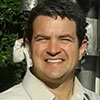
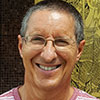
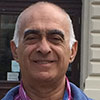
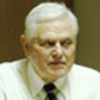
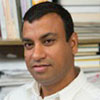
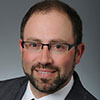

















The government is intending to encourage more moms to consider good thing about the Federal
Pell Grant by enhancing the volume of money handy to each student every semester.
Through this software, a mom, who is really a teacher simultaneously shall have a chance to pursue a
better education. This program goes together having an education initiative do
by President Obama in their American Recovery and Reinvestment Act
of 2009.